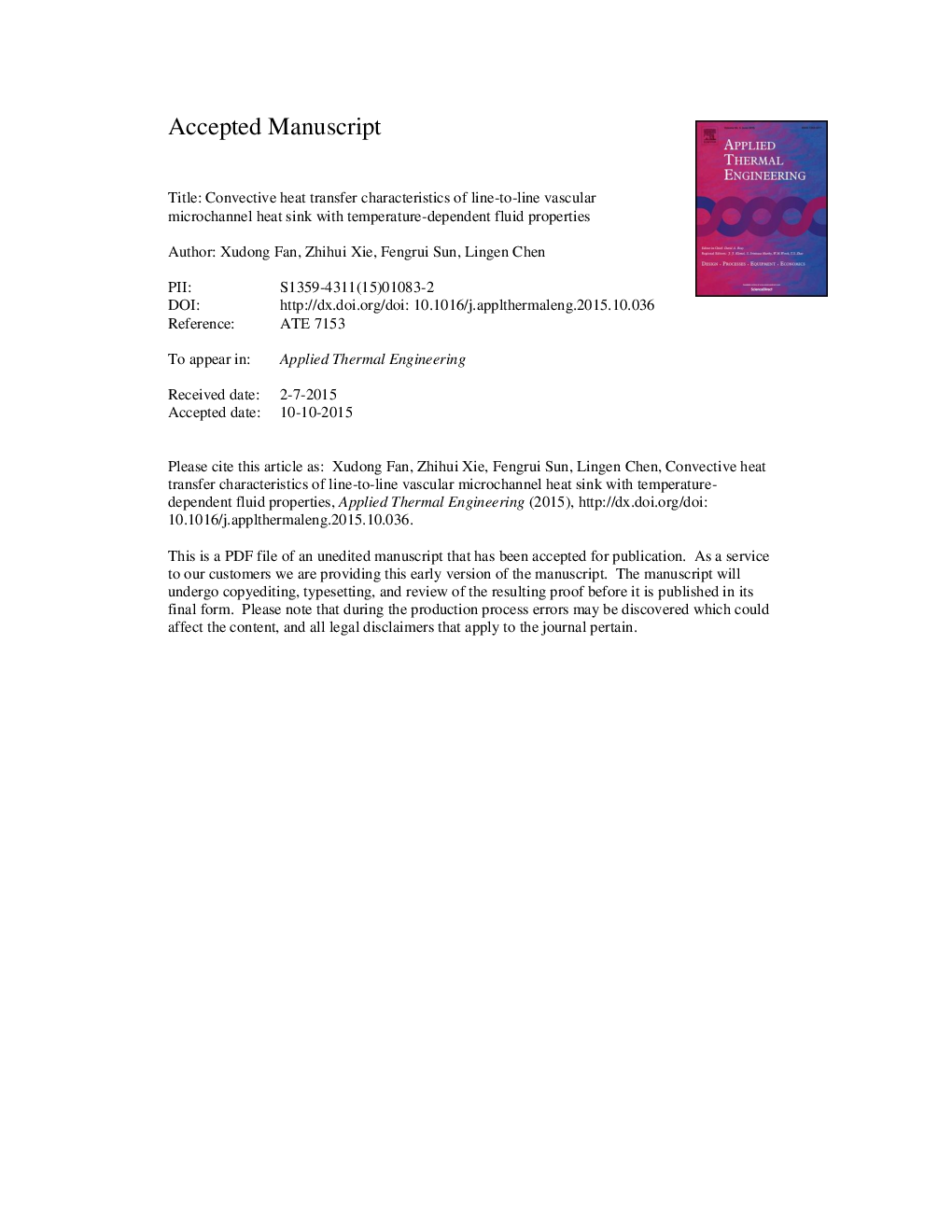| کد مقاله | کد نشریه | سال انتشار | مقاله انگلیسی | نسخه تمام متن |
|---|---|---|---|---|
| 7048769 | 1457135 | 2016 | 26 صفحه PDF | دانلود رایگان |
عنوان انگلیسی مقاله ISI
Convective heat transfer characteristics of line-to-line vascular microchannel heat sink with temperature-dependent fluid properties
ترجمه فارسی عنوان
خصوصیات حرارتی ممانعت از گرمای خنثی میکرو کانال عروق خطی با خواص سیال وابسته به دما
دانلود مقاله + سفارش ترجمه
دانلود مقاله ISI انگلیسی
رایگان برای ایرانیان
کلمات کلیدی
ترجمه چکیده
در این مقاله، یک مدل عددی سه بعدی خطی به خط انتقال گرمای میکروکانال عروقی با خواص مایع وابسته به دما ایجاد شده است. حداکثر تفاوت های دما، مقاومت حرارتی جهانی، اختلاف فشار بین خروجی و ورودی کانال ها و اثرات حرارتی عروق از اولین مرتبه تا مرتبه چهارم با جریان های جرمی متفاوت در هر ثانیه از مایع خنک کننده محاسبه می شود نرخ های مختلف جریان گرما ورودی در واحد مساحت. خصوصیات انتقال حرارت کنجکاوی عروق خط به خط به طور جامع تجزیه و تحلیل می شود. نتایج نشان می دهد که توانایی مقاومت در برابر افزایش جریان جریان ورودی در واحد سطح عروق قوی تر می شود در حالی که اثربخشی حرارتی به عنوان تعداد سفارش عضلات افزایش می یابد، در حالی که در شرایط با جریان جرمی بالاتر در هر ثانیه شماره مایع و بالاتر، اثر افزایش تعداد سفارش در کاهش اثرات حرارتی نسبتا ضعیف است.
موضوعات مرتبط
مهندسی و علوم پایه
مهندسی شیمی
جریان سیال و فرایندهای انتقال
چکیده انگلیسی
A three-dimensional numerical model of line-to-line vascular microchannel heat sink with temperature-dependent fluid properties is established in this paper. The maximum temperature differences, the global thermal resistances, the pressure differences between the outlet and inlet of the channels and the thermal effectivenesses of the vasculars from the first order to the fourth order are calculated with different total mass flows per second of the cooling fluid and different rates of input heat flow per unit area. The convective heat transfer characteristics of the line-to-line vasculars are comprehensively analyzed. The results show that the ability resisting the increase of the rate of input heat flow per unit area of the vascular becomes stronger while the thermal effectiveness decreases as the order number of the vascular increases, while under the conditions with higher total mass flow per second of fluid and higher order number, the effect of the increase of order number on the decrease of the thermal effectiveness is relatively weaker.
ناشر
Database: Elsevier - ScienceDirect (ساینس دایرکت)
Journal: Applied Thermal Engineering - Volume 93, 25 January 2016, Pages 606-613
Journal: Applied Thermal Engineering - Volume 93, 25 January 2016, Pages 606-613
نویسندگان
Xudong Fan, Zhihui Xie, Fengrui Sun, Lingen Chen,
